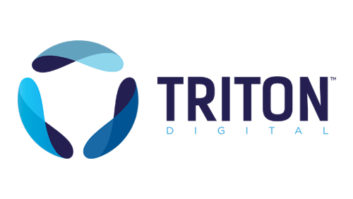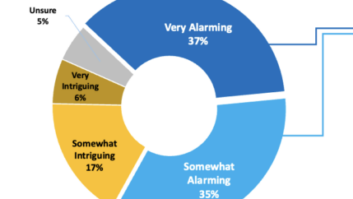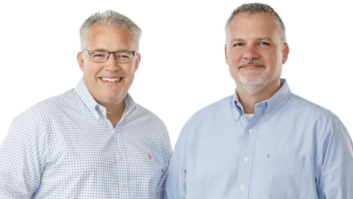
Podcasting has been around since the mid-Aughts, but the medium seems to have really taken off with the near-ubiquity of smartphones and streaming. This increased popularity bears out in a new report from Edison Research and Triton Digital.
The Podcast Consumer 2016 examines U.S. podcast/audio listening habits and demographics. The information was pulled out of the Infinite Dial 2016 study, conducted in January and February 2016 via a national telephone survey of 2001 people, and released earlier this year.
Some interesting findings are highlighted below.
More than half (55% of those survey) — an estimated 150 million people — said they are familiar with the term “podcasting.” Compare that with 49% in 2015 and 22% in 2006. The year-over-year change alone demonstrates a significant shift in the public consciousness.
Awareness: While more than half of Americans age 12 and older may know about podcasting, only 36% say they have ever listened to one — three times the number who said they had done so in 2006 but only a 3% bump from 2015.
Monthly listening demographics: This year, 21% said they had listened to a podcast in the last month. Breaking that down further, respondents aged 12–24 were most likely to have done so (27%), followed predictably by those 25–54 (24%) and the 55+ crowd (11%).
Men were also more likely to have listened to a podcast monthly than women, at 24% versus 18%; out of just those respondents who said that they had listened to a podcast during the previous month, 56% were men and 44% were women.
In general, the majority of podcast listeners are either aged 18–34 (38%) or 35–54 (34%); adults 55 and older made out 17% of reported listeners, while pre-teens and and teenagers in the 12–17 age bracket were least likely to listen (11%).
Income and schooling: Podcast listeners overall were also found to be more wealthy and more educated than the average consumer. Median household income for podcast consumers 18+ is $63,000, while that of the general U.S. population for the same age range is $53,000. Almost one-third of podcast listeners say they have completed at least some graduate schoolwork or attained an advanced degree, while the same is true for 21% of the general population.
How long: Podcast listeners of all varieties, ranging from weekly listeners to occasional experimenters, were most likely to report that they had begun listening to podcasts in the past one to three years.
An estimated 35 million people, extrapolated from 13% of survey respondents, said they had listened to a podcast in the past week; up from 7% in 2013. Out of those in weekly listener category, 40% said they listened for between one to three hours, 19% said they did so for three to five hours and 17% estimated five to 10 hours of podcast listening; fewer than 10% guessed they had listened for less than an hour during the past week. Weekly listeners also averaged consumption of five podcasts per week; however, it is unclear whether a “podcast” meant a different episode or a different series in this context.
Device of Choice: In 2016, the vast majority of podcast consumers did so on a mobile device of some type; only 29% listened on a computer. This is a reversal from 2013, when 58% favored a PC over a smartphone or tablet. IPhones are more popular with podcast listeners than Android or other smartphones, with 49% choosing the Apple device as compared to 41% who said they owned an Android. However, Android owners were more likely to listen to more podcasts per week — 12% said they listened to 11 or more, while only 6% of iPhone owners said they did so
Where: The majority of podcast listening takes place at home — 53% of those surveyed reported that location as the most common. However, 21% said they listened in a vehicle, but public transportation was unpopular for podcast listening, with only 4% listening it as the top spot — less popular than the workplace, where 14% said they listened.
Downloads: Podcasts are also no longer something to which the majority of consumers subscribe. The most popular method is to click and immediately listen (59%), while 23% manually download and later listen; only 15% subscribe and listen later. Of those who do download and listen later, more than half (55%) did so within 24 hours.
General audio consumption: While the average U.S. consumer reports listening to AM/FM radio for 54% of time spent listening, the same is not true of podast listeners, who choose podcasts for 32% of audio consumption, OTA radio for 25%, owned music for 17% and streaming for 14%. Three-quarters of podcast consumers said they had also listened to online radio in the last week; the same was true for only half of Americans in general.
Radio receivers remain the most popular audio listening device (50%), but smartphones come second with 20% of listening time done on those devices and 34% of consumers said they listen to audio on a smartphone daily. When listening on a smartphone, the majority opt to listen to owned music (43%) or stream (38%), but radio (8%) narrowly beat out podcasts (7%) even on this device.
Political affiliation: In this presidential election year, readers may be interested to know that 32% of podcast listeners identify as Democrats, 26% say they are Independents, 24% call themselves Republicans and 18% say they are “something else.” Compared to the general population, podcast listeners are slightly more likely to self-identify as Independents (24%) and a bit less likely to call themselves Republicans (27%).
Download the full report here.











